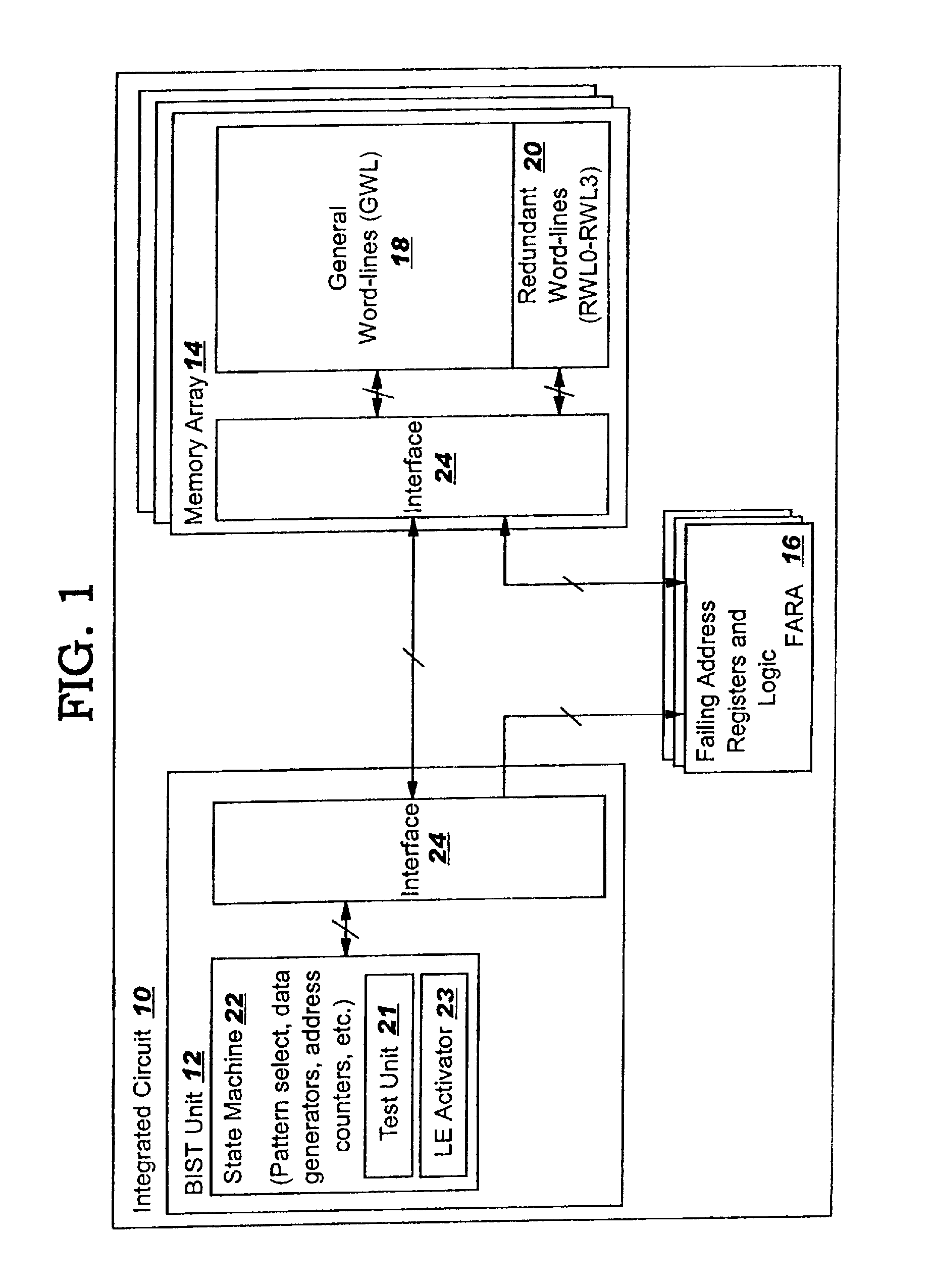Enabling memory redundancy during testing
a technology of memory redundancy and testing, applied in the field of memory redundancy, can solve the problems of affecting the manufacturing yield of these chips, the substantial cost associated with chip repair, and the repetitive and predictable design of these chips. test the effect of unused redundant memory elements
- Summary
- Abstract
- Description
- Claims
- Application Information
AI Technical Summary
Benefits of technology
Problems solved by technology
Method used
Image
Examples
case 1
[0037] If the failing address does not match the contents of any FAR 26, then the failing address is loaded into the next available FAR, and the corresponding temporary enable bit TE bit of the next available FAR is set.
case 2
[0038] If the failing address matches at least one FAR address and both temporary-enable bit TE and enable bit EN for each matching FAR 26 are not set, then the failing address is loaded into the next available FAR, and the corresponding temporary-enable bit TE of the next available FAR is set.
case 3
[0039] If the failing address matches one FAR, and enable bit EN for this FAR 26 is set, and both the temporary bad-redundancy bit TB and bad-redundancy bit BR for each matching FAR are not set, then the failing address is loaded into the next available FAR, the corresponding temporary-enable bit TE of the next available FAR is set and temporary bad-redundancy bit TB for this matching FAR is set.
[0040]In all other cases, none of the FAR contents are updated.
[0041]At some point(s) during test, LE activator 23 activates load-enable signal LE which forces the value of temporary-enable bit TE to load into enable bit EN and resets temporary-enable bit TE. When enable bit EN is set to a “1” and bad-redundancy bit BR is not set “0,” AND gate 32 enables (via redundancy enable (RE) signal) the RWL in memory array 14 to replace this address, i.e., the redundant address (RA). Similarly, when LE activator 23 activates load-enable signal LE, it forces the value of temporary bad-redundancy bit TB...
PUM
 Login to View More
Login to View More Abstract
Description
Claims
Application Information
 Login to View More
Login to View More - R&D
- Intellectual Property
- Life Sciences
- Materials
- Tech Scout
- Unparalleled Data Quality
- Higher Quality Content
- 60% Fewer Hallucinations
Browse by: Latest US Patents, China's latest patents, Technical Efficacy Thesaurus, Application Domain, Technology Topic, Popular Technical Reports.
© 2025 PatSnap. All rights reserved.Legal|Privacy policy|Modern Slavery Act Transparency Statement|Sitemap|About US| Contact US: help@patsnap.com



